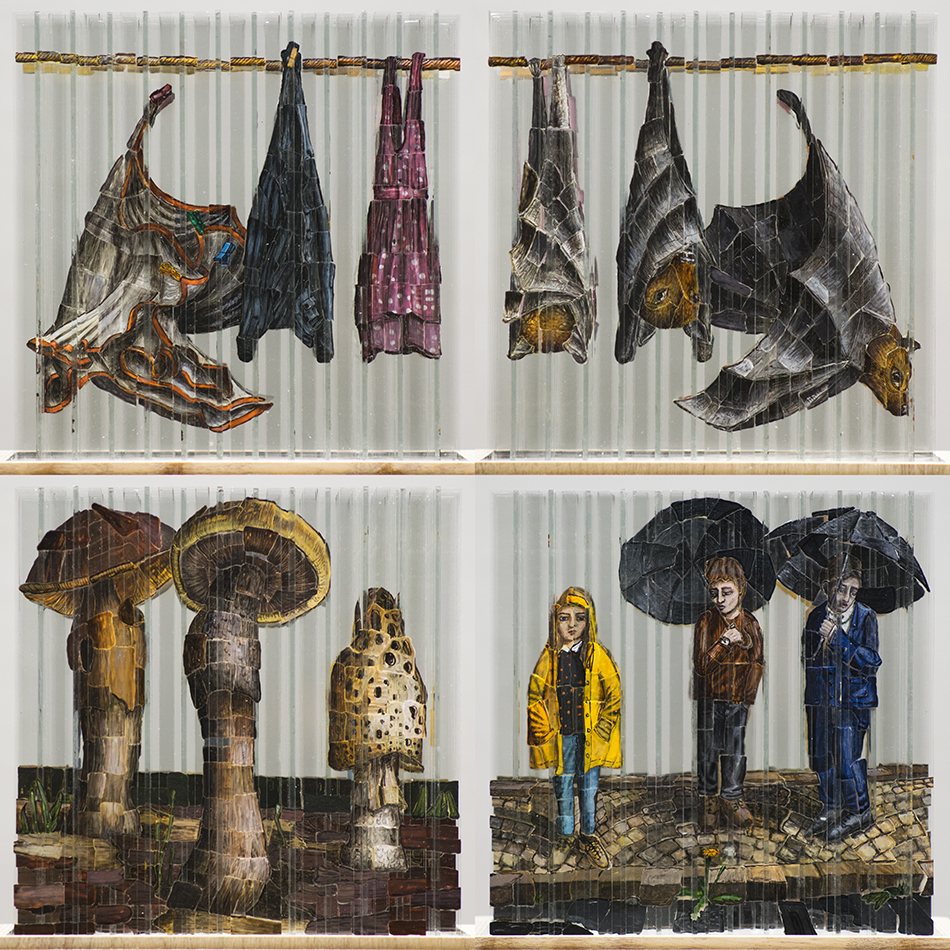
Chris Jones’s large-scale sculptural work looks fragile even though his subject matter often focuses on objects we presume to be tough, stable — even nearly unbreakable. In his current show at Mark Straus Gallery in New York City, a sports car melts and unravels before our eyes. A motorcycle tempts us to scratch and peel away its layers. Houses disintegrate into heaps of deteriorating objects. Jones works with abandoned and disused materials — old magazines, books, encyclopedias, paper ephemera and even trash — to create papier mache pieces that destabilize our view of the world around us. We create our environments through the accumulation of objects and materials. Jones’s latest body of work pulls us back, reminding us how ephemeral and artificial these things are. It’s a bleak reminder that material objects and the world we’ve built will not stand the test of time.
Chris Jones’s solo show is on view through June 22. Images courtesy of Marc Straus Gallery.











 A careful collector of found objects and (ethically sourced) animal bones,
A careful collector of found objects and (ethically sourced) animal bones,  Currently living and working in the idyllic town of Urtijëi, Italy, sculptor
Currently living and working in the idyllic town of Urtijëi, Italy, sculptor  Swedish artist
Swedish artist 